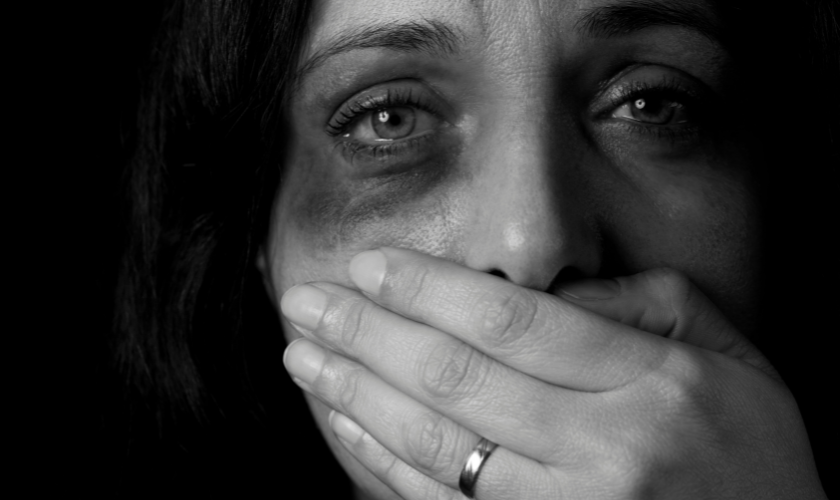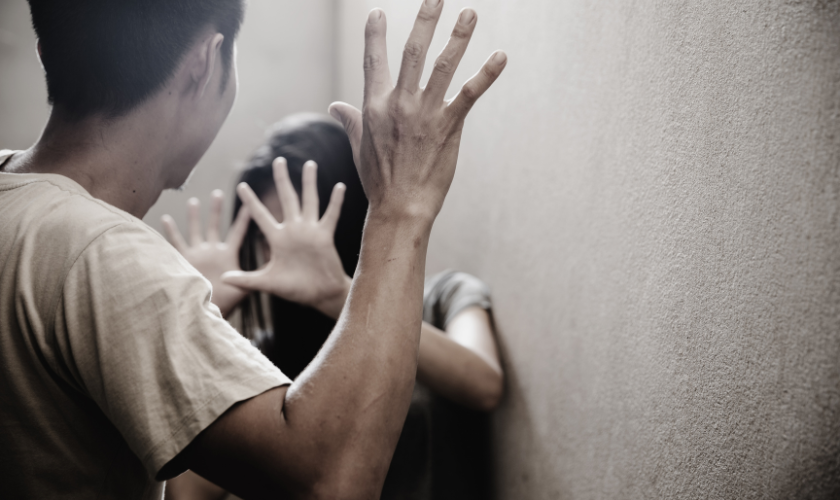A Comprehensive Guide on the Complex Stages of Domestic Violence
- Tension building: In this stage, tension and stress build up between the abuser and the victim. The victim may feel like they're walking on eggshells, trying to avoid triggering the abuser's anger.
- Incident or acute violence: This is when the actual abuse takes place. It may involve physical, emotional, verbal, or sexual violence, or a combination of these.
-
Reconciliation or "honeymoon" phase: After the abusive incident, the abuser may express remorse, apologize, or make promises to change. They might be affectionate or shower the victim with gifts, making the victim hopeful that things will improve.
- Calm or "honeymoon" phase: During this period, the abuser might seem genuinely committed to change, and the relationship appears to be improving. The victim may start to believe that the abuse is over.
In today's society, domestic violence remains a pervasive and complex issue, affecting countless individuals and families across the globe. Understanding the stages is crucial for victims, loved ones, and professionals to identify, intervene, and support those in need.
This blog post will discuss the steps of domestic violence, offering insights and strategies to navigate these difficult situations.

The Tension Building Phase: Recognizing the Warning Signs
The first stage in the cycle of domestic violence is the tension-building phase, characterized by a gradual increase in stress and strain within the relationship. Victims may experience various negative emotions during this stage, such as fear, anxiety, and confusion. It is crucial to recognize the warning signs of this phase, which include:
- Passive-aggressive behavior
- Verbal abuse
- Criticism and humiliation
- Isolation from friends and family
- Controlling behavior(1)
Victims should be proactive in seeking help and support during this stage, as early intervention can prevent escalation into more severe forms of abuse like physical violence. If you or someone you know needs assistance, consider contacting a mental health professional or therapist through platforms like this.

The Acute Battering Episode: When Violence Strikes
In the second stage of domestic violence, the tension-building phase culminates in an acute battering episode(2). This stage involves abusive behaviors like physical abuse incidents, emotional abuse, and sexual abuse and may result in severe injuries or even death. Recognizing the signs of an acute battering episode by an abusive partner is crucial for the safety and well-being of the victim. These signs can include:
- Intense anger or rage
- Unpredictable mood swings
- Physical aggression, such as hitting, kicking, or choking
- Forced sexual activity or rape
- Destruction of personal property(3)
During a physically violent episode, the victim's priority should be to ensure their safety and the safety of any children involved. This may include calling the police, seeking medical attention, or leaving the abusive situation.

The Honeymoon Phase: A False Sense of Security
The third stage of the domestic violence cycle is the honeymoon phase, marked by calm and reconciliation following the acute battering episode. During this stage, the abuser may display remorse, make promises to change and engage in acts of kindness or affection. However, this phase is often a reprieve, and the cycle of violence is likely to continue unless appropriate action is taken.
Victims should not be lulled into a false sense of security during the honeymoon phase. Instead, they should use this time to develop a safety plan, gather resources, and seek professional help to break the cycle of violent behavior by their partner. (4)

Breaking the Cycle: Strategies for Empowerment and Healing
To break free from the cycle of violence and abusive incidents, victims must be empowered with the knowledge, resources, and support necessary to make informed decisions and take action. Some critical strategies for empowerment and healing include:
- Developing a safety plan
- Seeking professional counseling or therapy
- Connecting with support groups
- Building a support network of friends and family
- Learning about legal options and resources
Remember, help is available through various channels, including online therapy services. (5)

Legal Resources and Protection for Victims of Domestic Violence
Understanding and accessing legal resources is essential in breaking free from the cycle of domestic abuse. In many jurisdictions, laws, and protections are in place to assist victims and hold abusers accountable. Some of the legal resources available include:
- Restraining orders or protection orders: These are court orders that restrict the abuser from contacting or coming near the victim and their children.
- Domestic violence shelters: These are safe havens for victims and their children, providing temporary housing, emotional support services, and legal assistance.
- Legal aid services: Many organizations offer free or low-cost legal representation to victims of domestic violence, helping them navigate the complex legal system. (6)

The Importance of Self-Care and Mental Health Support
Recovering from domestic violence is not only about ensuring physical safety but also about healing emotionally and mentally. Self-care and mental health support are crucial components of this process. Some ways to prioritize self-care and mental health include:
- Engaging in regular physical activity
- Practicing mindfulness and relaxation techniques
- Maintaining a balanced diet and proper sleep
- Establishing healthy boundaries in relationships
- Seeking professional mental health support, such as therapy or counseling(7)
Online therapy platforms like this one can be an accessible and convenient way to access mental health support from the comfort of your own home.
The Role of Community and Society in Combating Domestic Abuse
It's essential to recognize that domestic abuse is not just a personal issue but a public concern requiring collective effort from communities and society. By fostering awareness, promoting education, and advocating for policy changes, we can create a safer environment for all. Some ways that communities and culture can help combat domestic violence include:
- Supporting local domestic violence organizations: Donate time, money, or resources to organizations that assist and help victims.
- Raising awareness: Organize or participate in events, campaigns, or social media initiatives to raise awareness about violence and the resources available to victims.
- Educating others: Encourage discussions about abusive behaviors in schools, workplaces, and community spaces to break the silence on not just physical abuse but also sexual abuse and abusive behavior.
- Advocating for policy changes: Support policies and legislation that protect victims of abusive relationships and hold abusive partners accountable. (8)
The Path to Prevention: Addressing the Root Causes of Domestic Abuse
To effectively prevent domestic violence, it's vital to address the underlying causes that contribute to its prevalence. Some key areas to focus on include:
- Challenging harmful gender norms and stereotypes: Promote gender equality and challenge traditional gender roles perpetuating power imbalances within relationships.
- Fostering healthy relationships: Educate individuals about the qualities of healthy relationships, such as mutual respect, trust, and open communication.
- Strengthening economic opportunities: Provide resources and support for economic stability, as external stressors like financial stress can contribute to domestic violence.
- Enhancing community support systems: Strengthen community resources and networks to ensure victims can access the support they need to leave abusive partners(9).
By addressing these root causes, we can work towards creating a society free from violence, where everyone can live safely and without fear.

Empowering Voices: Survivor Stories of Resilience and Hope
One of the most powerful ways to understand the impact of domestic violence and the journey toward healing is through the personal stories of survivors. These accounts offer valuable insights into the challenges faced, the resilience required, and the hope that emerges from overcoming adversity. By sharing their experiences, survivors not only empower themselves but also inspire and support others who may be facing similar situations.
Below are some resources where you can read or listen to domestic violence survivor stories:
- Domestic Shelters - True Survivor Stories: This blog features stories from survivors, providing a glimpse into their experiences and the challenges they overcame.
- Safe Lives - Survivor stories: Safe Lives supports victims of abuse and violence. Their website includes a collection of survivor stories that shed light on personal experiences related to domestic violence.
- Safe And Equal -Stories from survivors: This organization is dedicated to ending violence against women and children worldwide, and its website features a section dedicated to the inspiring stories of survivors.
- Tessacs - Survivor Stories: This organization is committed to ending abusive relationships and violence against women and children. Their website includes a section where you can read about the experiences of individuals who have faced abusive behavior and incidents.
Remember, when sharing or citing personal stories, it's crucial to respect the privacy and wishes of the individuals involved.
By amplifying the voices of survivors, we can foster understanding, empathy, and a sense of community, ultimately contributing to the collective effort to break the cycle of violence and domestic abusive behaviors.
Conclusion
Domestic violence is a complex and pervasive issue that impacts individuals, families, and communities worldwide. Victims can navigate toward safety and healing by understanding the stages of domestic violence, recognizing the warning signs, and seeking appropriate support. As a society, it's crucial that we raise awareness, promote education, and advocate for policy changes to address the root causes of domestic violence and create a safer environment for all.
Remember, help is available for those in need, including online therapy platforms offering convenient and accessible mental health support. Together, we can work towards a future free from domestic violence, where everyone can live a life of safety, dignity, and respect.
FAQs
How can I support a friend or family member experiencing domestic violence?
- Listen without judgment: Create a safe space for your loved one to share their experiences and feelings. Be supportive, empathetic, and non-judgmental.
- Offer resources: Share information about support groups, counseling services, and legal resources available for victims of domestic violence.
- Help develop a safety plan: Assist your loved one in creating a personalized plan to ensure their safety and the safety of their children, if applicable.
- Be patient and persistent: Remember that leaving an abusive relationship is a process that takes time and courage. Offer ongoing support and encouragement.
How can I identify the warning signs of domestic violence in my relationship?
Some common warning signs of domestic violence include:
Controlling behavior: Your partner tries to control aspects of your life, such as your finances, social activities, or appearance.
Jealousy: Your partner is excessively jealous and possessive, often accusing you of being unfaithful without cause.
Emotional abuse: Your partner constantly belittles, humiliates, criticizes, or gives you the silent treatment, which lowers your self-esteem.
Isolation: Your partner isolates you from friends and family, making you dependent on them for support.
Threats and intimidation: Your partner uses threats or intimidation tactics to maintain control over you.
If you recognize these warning signs in your relationship, consider contacting a professional counselor or therapist for guidance and support.
References
- Safehouse Progressive Alliance for Nonviolence - EARLY WARNING SIGNS OF POTENTIAL ABUSE
- Walker, L. E. (1979). The Battered Woman. New York: Harper & Row.
- Research Gate: Cycle of violence in women victims of domestic violence: Qualitative analysis of OPD 2 interview
- NLM: Strategic analysis of intimate partner violence (IPV) and cycle of violence in the autobiographical text –When I Hit You
- Research Gate: Breaking the cycles of violence
- United Nations Office on Drugs and Crime: PREVENTING AND RESPONDING TO DOMESTIC
- NIH: Caring for Your Mental Health
- St. Xavier’s College: ROLE OF THE CIVIL SOCIETY IN ELIMINATING DOMESTICVIOLENCE IN METROPOLITAN CITIES: CASE STUDY
- Research Gate: DOMESTIC VIOLENCE: ITS CAUSES, CONSEQUENCES AND PRECLUSIONS STRATEGIES
